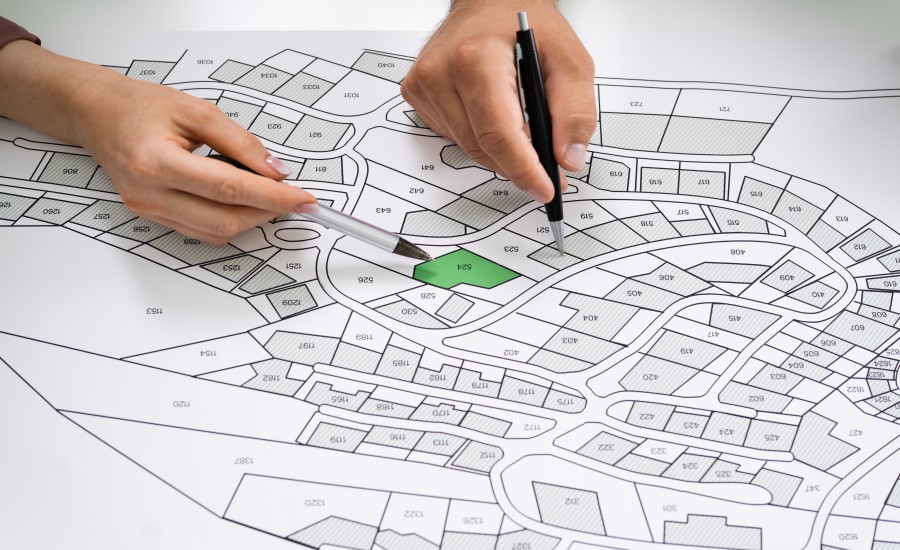
Law firm mentioned: Vilaf
In its bid to transform into a high-income country in Southeast Asia, Vietnam has moved to revamp its law to give more flexibility to the development and management of land, which is considered a crucial piece within the country’s economic development plans.
In January, Vietnam passed an amended Land Law to enhance the quality of land use planning. Deputy Prime Minister Tran Hong Ha said he believed the new law would “contribute to promoting growth with innovations and breakthroughs in thinking” and “help accelerate the country’s industrialisation and modernisation process, ensure social stability and national security, and protect the environment.”
WHY DOES VIETNAM NEED THE NEW LAW?
Vietnam’s economy was hailed as a steady performer throughout the COVID pandemic, even as some of its tourism-dependent neighbours took a beating. Bosting heightened attractiveness as an alternative manufacturing hub to China, Vietnam’s economy has been riding a rise in export demand.
In 2022, Vietnam sped to its fastest annual GDP growth since 1997, with an 8 percent uptick despite headwinds from a global slowdown. The figure softened to 5.05 percent last year partly due to weakening external demand, but it still outstripped many regional economies.
However, the country has been grappling with a rigid system regulating land use and procedures, crumping the effective allocation of land and dampening investor confi-dence. The government is confident that the new law could help unlock the commercial value of Vietnam’s land resources.
For example, delays in land acquisition are a frequent problem. It has been noted that the wait is mainly due to administrative issues, such as lack of transparent information, and legal issues, such as compensation and resettlement regulations.
Duyen Ha Vo, a senior partner at Vietnamese firm Vilaf, notes that the new land law supplements regulations to optimise land management and use, ensuring efficiency in urban and rural land development.
“Another objective is to implement a comprehensive, consolidated land law regime, emphasising the transformation and systematisation of all land policies and regulations to achieve consistency and effectiveness in application,” she says, adding that the law also intends to clarify the rights and obligations of land users.
HOW IS THE LAW GOING TO HELP MODERNISE VIETNAM?
Of the hundreds of new points in the 16-chapter law, Duyen highlights the changes to the regime to obtain land for “projects eligible as socio-economic development” based on “national and public considerations.”
These projects refer to proposed projects that would give the Vietnamese state the power to reclaim land from existing occupants and reallocate or lease it to investors.
“The new law extends and further intricately categorises the list of such projects,” notes Duyen. “For instance, new items added to this list are medical facilities, educational and training facilities, projects of renovation and rebuilding of apartment buildings and sea reclamation projects.”
Moreover, investors are allowed to enter into private negotiations with existing land occupants to obtain land for projects. Otherwise, they would have to go through the statutory land resettlement and clearance process for the state to reclaim such land from existing occupants, she points out.
“The new law also diversifies the forms of compensation to existing occupants for resettlement and requires compensation to be made according to market values of the reclaimed land,” notes Duyen.
In addition, a new legal framework will be introduced to authorise land use for multiple purposes. This provision is especially significant to developers.
With the authorisation, “residential land may add agricultural, or commercial, service uses as ancillary use purposes; religious and worship land may add commercial, service uses as ancillary use purposes, and agricultural land and non-agricultural land may add construction of postal, telecommunications, and electricity infrastructure works as ancillary use purposes,” says Duyen, adding that the land user must submit a modified land use plan proposal for official approval.
Another well-received change introduced is the explicit permission for persons to transfer their “lease rights” to others if they lease land from the state under an annual rent payment scheme.
Also, there will be no investor selection tendering requirements except for township development projects including international football betting and joint ventures with state-owned enterprises involving changes in land use purposes, Duyen points out.
WHAT CHALLENGES WILL INVESTORS BE FACING?
Duyen points out that most proposed changes actually favour land users compared to investors, who therefore, will need to pay closer attention, especially the immediate period - around two to three years – following the enactment of the new law.
“Investors must navigate this transitional phase with careful consideration, informed advice, and strategic planning. Business areas such as real estate, energy, infrastructure projects, and commercial/industrial properties will necessitate meticulous legal guidance and strategic regulatory management for successful project development and M&A activities,” says Duyen.
“While a comprehensive assessment will be needed after the issuance of sub-law regulations guiding the new law’s implementation, the new law’s anticipated effect is to provide increased opportunities and flexibility for investors, land users, and relevant state authorities,” she adds.


